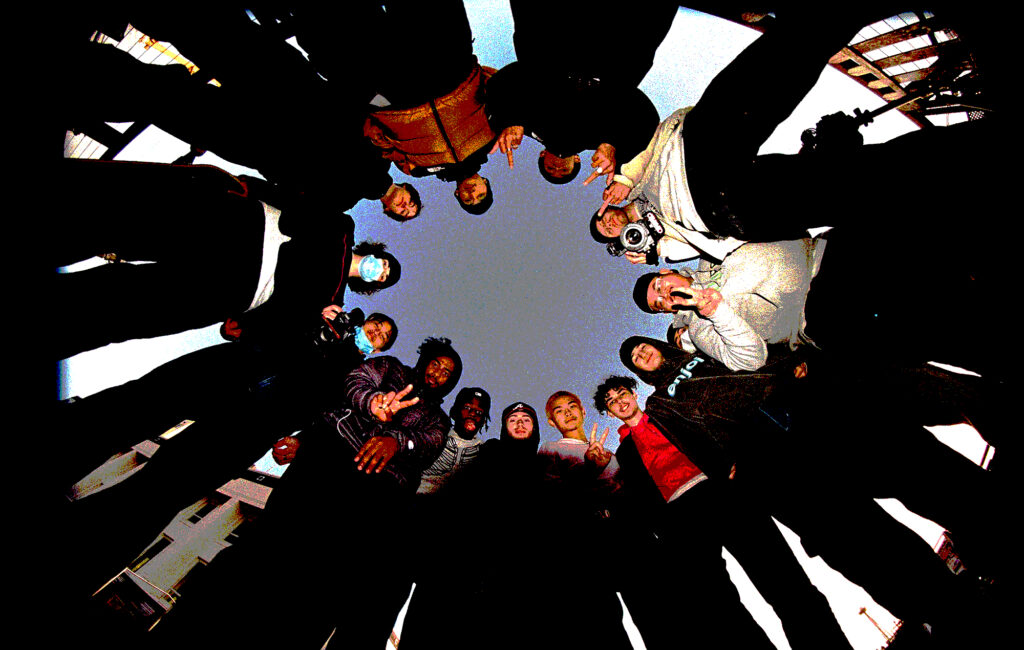In Seattle, ghosts of the past preside over one skate team’s quest to get filthier than ever.
THEO MERANZE
Weeks ago, when I first discussed a loose conception of this project with a friend in a coffee shop somewhere in Tacoma, WA, the couple next to me started to pray for me — which wasn’t surprising. They weren’t praying because my idea was profoundly transgressive, but because it was, and continues to be, purposely gross. To liken cynical nostalgia to necrophilia in the literal sense would be, of course, nonsensical. But there’s a certain critical utility in allegorically relating the two, in that the phenomenon I am attempting to get at has been, and continues to be, urgently nasty. While broaching this project to an old professor, he suggested that I title it “the return of the non-repressed.”
It’s intriguing to me that at a time where so much is happening, where so much is changing, our turbulent cultural moment seems to have left much of the population cynical about its transformational powers. I am not saying that there is nothing exciting going on in culture at the moment: quite the opposite. It feels to me, though, as if there is a broad coating of doubt underlying our outlook on the future and its potential to create anything new.
“We continue to eschew mourning the moment’s failure, its passing: our collective imagination makes love to its ghost.”
In comparison to the mid 20th century- a standard to which we often hold our socially volatile,transgressive times—our contemporary moment seems to not believe in its own radical cultural potential. Communists, on a mass scale, often seem incapable of escaping the hope of May ‘68 in the same way that Jazz musicians often seem unable to escape comparison to Miles Davis and John Coltrane. We continue to eschew mourning the moment’s failure, its passing: our collective imagination makes love to its ghost.
In the face of this failure (both the failure itself, and our inability to mourn it), our moment seems to believe, perhaps rightfully, that in the midst of everything changing, nothing is actually changing at all. In the business of beautiful things, this cynicism has manifested itself in an attitude that situates “authentic,” valuable contemporary culture as strictly a product of the ugliness that undergirds it; as a result, paradoxically, the past is one of the only places to look to for inspiration. It is here, in this dynamic, that we can posit the beginnings of our obsessive, necrophilic, attraction to the things we no longer have.
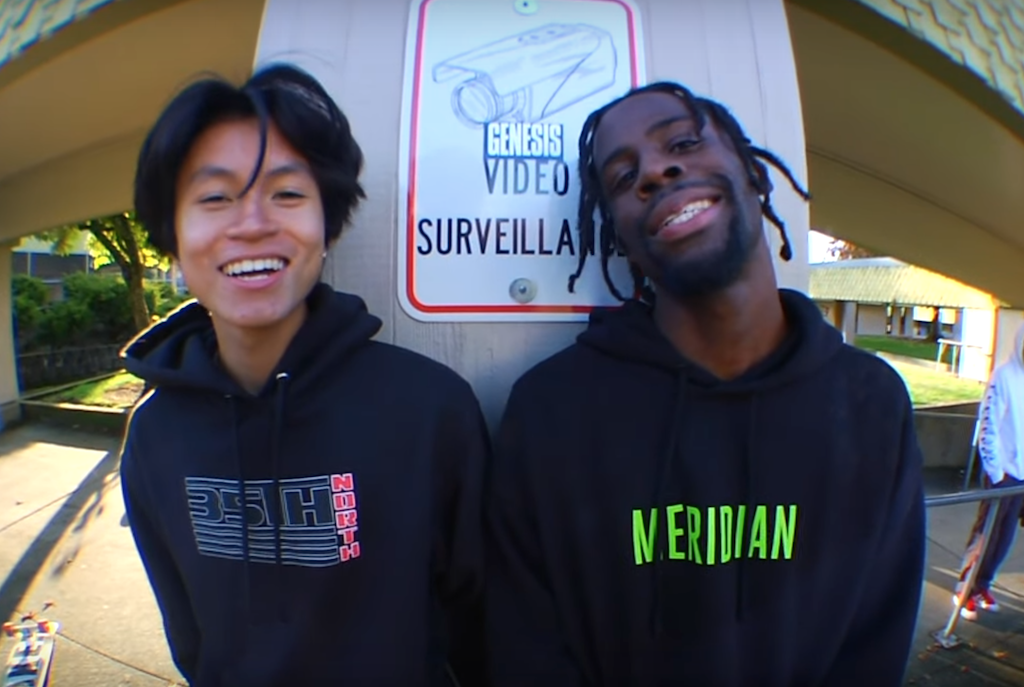
The notion that postmodern western culture is incapable of producing novel ideas is not new. The most well known evocation of this idea, perhaps, may be the deployment of “Pastiche” by Frederic Jameson, meant to describe the postmodern impulse towards parody. Another well known analysis of this phenomenon is Mark Fisher’s assertion that “Capitalism is what is left when beliefs have collapsed at the level of ritual or symbolic elaboration, and all that is left is the consumer-spectator, trudging through the ruins and the relics.” The assessment appears in Fisher’s canonical work of criticism Capitalist Realism, where he laments our current inability to see beyond, as he put it, our “horizons of possibility.” The pervasiveness of these ideas points to the far reaching nature of the cultural illness that they are attempting to diagnose.
The contemporary creatives who inherit this cultural detritus can either see themselves, or not see themselves, as afflicted by this reality. In the world of skateboarding, as a Seattle-bred crew of unlikely heroes seeks to break free of the past, there are just as many questions as answers.
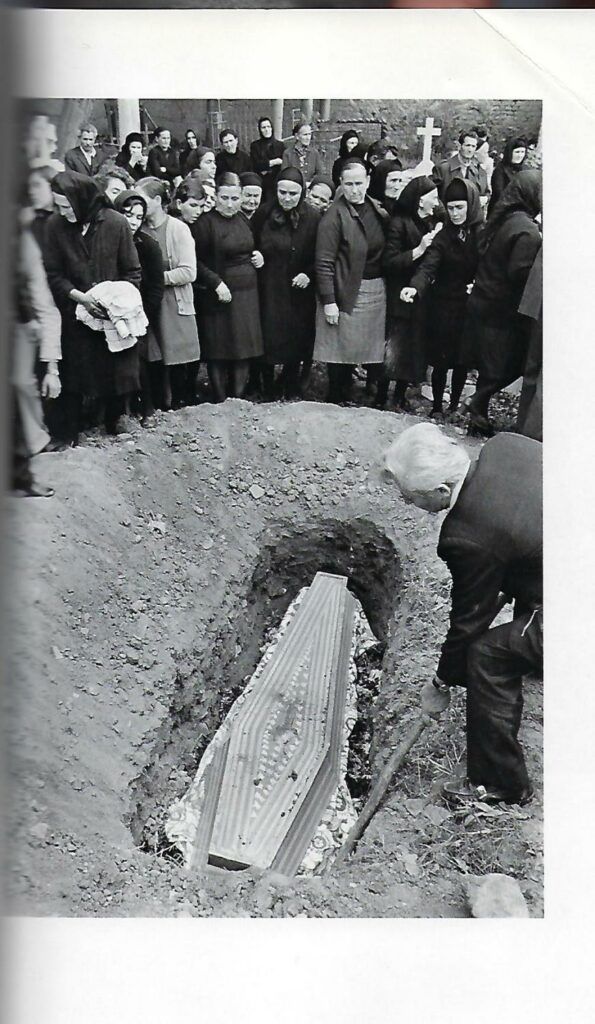
I. ON MOURNING (AND THE LACK THEREOF)
In rural Greece, the process of mourning a lost life is a dramatic, public odyssey. Mourning is recognized, predominantly, as a public endeavor: one that must expand itself, by definition, into the crevices of the social body.
Once the corpse has been buried, it is traditional for those mourning to gather at the graveyard and lament together, a ritual captured by anthropologist Loring Danforth in his prolific photo exploration titled The Death Rituals of Rural Greece:
“One woman sat near the head of a grave, staring at a photograph of a young woman. She rocked gently back and forth, sobbing and crying. Suddenly she began to sing a lament in a pained, almost angry tone of voice. Before she finished the long, melismatic line of the first verse she was joined by other women. The intensity of emotion in the women’s voices quickly increased. The verses of the lament, sung in unison by the chorus of mourners alternated with breaks during which each woman shouted a personal message addressed to her own dead relative.
“Ah! Ah! Ah! My unlucky Eleni.”
“Nikos, what pain you have caused us. You poisoned our hearts.”
“Kostas, my Kostas, the earth has eaten your beauty and your youth.”
Eventually, the lamenting ends, and the mourners comfort those
“who had shouted the loudest, whose grief seemed to be the most intense, by telling them to have patience, to be strong, and to remember that they accomplished nothing by carrying on so. Two or three of the most grief-stricken women said that they would stay a few more minutes, until the candles burned out; but the other women continued to urge them to leave, saying: “In the end we’ll all come here. Even if we sit here all night, the dead still won’t return from the grave.”
This ritual of vocal lamentation is only a small part of a broader, public expedition of mourning those experiencing grief undergo. The mother, Irini, of the twenty year old girl struck by a car, demonstrated her grieving aesthetically by wearing black for the next five years, and partaking in public ritual:
“Every day without fail for five years she came to her daughter’s grave, once in the morning and then again in the evening. She attended all the funerals and memorial services in Potamia and the surrounding villages so she could lament, cry, and express the pain she felt.”
The public process of mourning ends five years after a death, when the body is exhumed. It is at this point that the grave will be dismantled, and mourners, like Irini, will move the flowers that they were watering for five years atop the gravesite to the site of another, more recent death. While the pain of such a loss will never go away, it is only after this long period of mourning, that the rural Greek process of grief is considered sufficiently complete.
It is ironic, yet it makes sense, that contrary to the elaborate mourning process of rural Greece, a society such as ours that produces so much unnecessary death, (mass shootings, domestic and international and domestic state-sponsored violence, colonial genocide, police crime, etc) has no discernable system in place for mourning. Losses — of others, of time, of money, etc — are all resultantly confusing, terrifying prospects, yet we seem culturally obsessed with their corpses. We live our lives devoid of any embodied recognition of death, by the past, haunted by its inevitability and surrounded by reminders of its constancy.
In his essay “From Western Marxism to Western Buddhism” theorist Slavoj Zizek points out that western culture has always functioned as intrinsically externally inclined, that the “Western logic of desire to penetrate the inaccessible object beyond a limit”: a impulse that has existed within us since the days of antiquity, where the Greeks sought out the mystifying, all-knowing knowledge of the Egyptians, has left us through intellectual inheritance pre-dispositioned to always search for what is perceived to be the redemptive truth in the what we consider to be the other.
“Colonization was never simply the imposition of Western values, the assimilation of the Oriental and other Others to European Sameness; it was always also the search for the lost spiritual innocence of our own civilization. This story begins at the very dawn of Western civilization, in Ancient Greece. For the Greeks, Egypt was such a mythic place of lost ancient wisdom.”
It is this orientalizing, othering impulse that is beginning to be directed not externally, but towards the dead: the orientalization of the past. What is at stake here is the relationship between what we deem to be art, history, culture, and capital, and where we draw the line. For the Genesis -crew, a burgeoning force in the skate world whose situation rests on this complicated intersection, the weight of these forces is being felt heavier than ever.
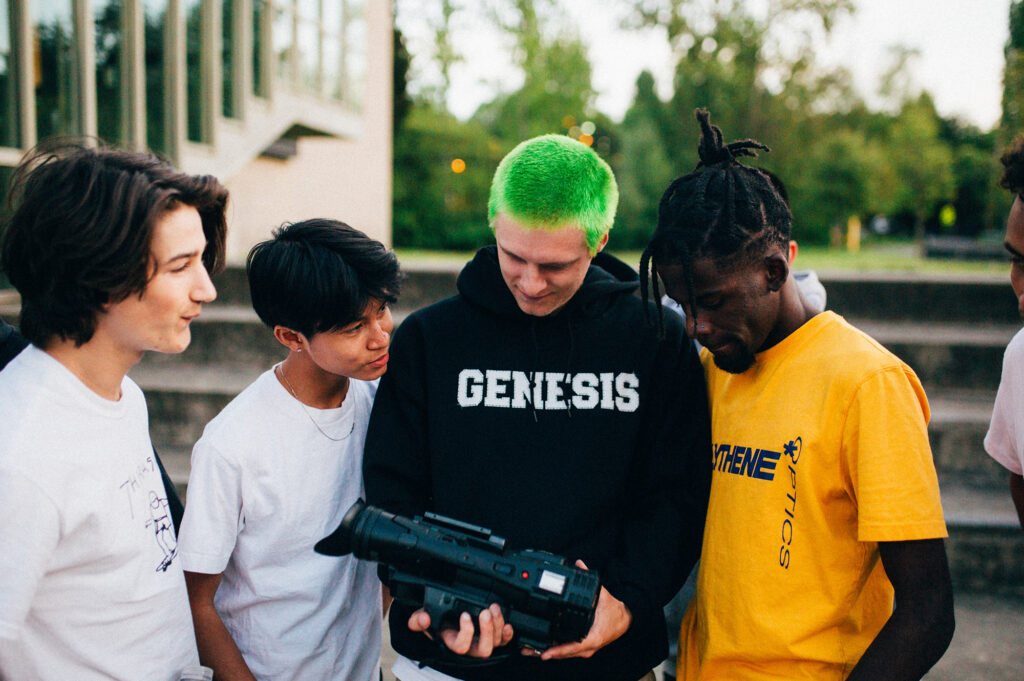
II. GENESIS
(PHOTO: Zach Fajardo)
I first encountered Genesis as a unit on a quiet night in an unnamed office complex in Seattle’s Sodo district. The crew was gathering to plan out the impending release of Genesis 3, the third in a line of prolific Skate Videos that have garnered hundreds of thousands of views. They usually meet at the home of Ian Ostrowski, the group’s founder, filmer, and de-facto ring-leader; today, they were using an affiliate’s office space to grant the discussion a more intentional, professional air.
“Sodo” is an industrial area of Seattle named after New York’s infamous and now gentrified So-Ho district. Sodo’s naming is in many ways a symbolic move, meant to evoke cultural memories of abandoned, mid-late 20th century So-Ho industrial buildings ridden with drugs, struggling artists, and broken windows: now age-old vestiges of American bohemianism. Sodo, on the contrary, has not experienced the rapid gentrification of its New York counterpart, nor did it ever come close to fostering a semblance of its East-Coast namesake’s former cultural life.
For the most part, Sodo has remained relatively empty, save for the occasional business or art gallery and a myriad of indistinguishable industrial buildings. There are no bohemians smoking cigarettes, nor passionate college students debating the merits of Marx’s theory of alienation beneath dilapidated storefronts. On a weekday after 6 PM, there tends to be really no sign of life at all. It’s somewhat representative of Seattle’s current pop-cultural zeitgeist — under-served and lost in comparison to more canonical, established spaces.
This is not to ignore the at-times vibrant cultural underbelly of the city, but to point out that much of this vibrancy is not exported nationally. It is this zeitgeist, this relationship to the rest of the country, that contextualizes the rise of Genesis, and in many ways, makes them so exciting. It is also what makes their path at times so challenging.
The office building we found ourselves in held itself with the sort of professionalism that imposes itself through its subtleties — carpeted floors, a vast collection of espresso machines and water jugs held within nameless rooms, and winding staircases. Such seriousness stood in stark contrast to the Genny Crew’s first order of business: what to put on their up-coming official sandwich at a local burger joint named Lil Woody’s. As I sat and watched them debate what makes a chopped cheese sandwich a chopped cheese sandwich (as opposed to, say, a cheeseburger), I began to notice the unmistakably familial quality to the crew’s vibe. When one spends enough time with Genesis, it becomes clear that this familial reality is underscored by a youthful passion for life and excitement for the future that continually guides their movement.
As the conversation continued, however, another clearly novel sensibility reared its head: a focus on the impending seriousness of what is to come. The topics became more conceptual, complicated, and progressively abstract — choosing aesthetics for the new merch; getting clips for the video; securing funding. Underneath the youthful exterior, it seemed, loomed an exciting yet just as nerve-racking identity crisis. With the impending release of Genesis 3, their soon-to-be flagship skate video, the crew was reaching a pivotal point in its development into a major force, and it was up to them, and them alone, to figure out (1) how to make that happen, and (2) how to navigate it when it did.
“This is a pivotal moment where you’re actually doing this or you’re just kids fucking around with shit.”
The group felt intimate at heart: small and tight-knit, bouncing ideas off of each other like a cognitive pin-ball machine. Though if the group’s most apt comparison is a pin-ball machine, Ostrowski, as well as Tim Hogan, photographer, skater, model, and at-times the behind the scenes pseudo-manager of the crew, are the structure of the machine itself, the funnel through which the rest of Geneisis’s talents and ideas pass. Ian and Tim do not have their hand on the pulse; they comprise the conduit for the pulse.
The ensuing reality of their conduit-hood is that they face a myriad of material challenges: getting the homies’ careers on point, grappling with the paradoxical nature of being the well-connected faces of a relatively culturally un-connected area of the country, and the challenges that come with being professional-level creatives with no professional backing. Ian sat in the middle of these challenges atop a foldable steel office chair — Dylan Clark, KJ Phanissay, and Jasper Levine to his right, Tim, Cooper Phillips, and graphic designer Nic Supa to his left — grappling with impossible question after impossible question. How could Ian make Genesis broadly palatable while maintaining its niche soul? What happens when a group of friends becomes a global brand? When youth becomes marketable?
The homie Cooper Phillips, tasked with helping design and strategize the economics of what could be a next-level Genesis brand/ company, gave the group a a harsh ultimatum: “This is a pivotal moment where you’re actually doing this or you’re just kids fucking around with shit.” The underlying goal, for Ian as well as the rest of the crew, it seems, is to do both. The question is only a matter of how.
For Genesis, the skating speaks for itself. There is a uniquely youthful quality to Ian’s work, yet it is a youthfulness that carries itself with the maturity and confidence that comes from knowing you’re one of the best in the world at what you do. Genesis has all the talent and clout of a major company without the grounding, big homie bureaucracy that comes from being in a major market city. Dylan Clark, a lanky, ultra-talented 22 year old from Kent, WA, is a professional-level skater sprinting towards his prime with no major corporate support(as of the writing of this piece). One of the challenges (and goals) of Genesis 3 was finding ways to position Dylan for next-level success. Troy Gipson, another Genesis alum and the provincial star of the Group’s second Skate film, began skating for Supreme and shooting with William Strobeck in 2021. His recent, dynamic part in Supreme’s “Play Dead” has only further legitimized his spot as a force at the highest level of an already high-level sport. Midway through the writing of this piece, Troy went pro for Strobeck’s skate imprint Violet.
The Genesis ethos seems to position itself as a part of Seattle’s long standing artistic tradition while taking advantage of newfound developments — in the worlds of skating, art, and internet culture — to push towards the potential next level. The crew are, of course, well acclimated to social media. Much of their popularity has come from a savvy ability to spread professional-level skate content on YouTube and the internet without the clout of a major company. As the crew has said themselves, the goal is always to “get filthier,” (a term coined by the Genesis crew and burgeoning musical stars Enumclaw) to find ways to make it, to get to the next level.
“If the object of the major film director is to manipulate and control reality through the enchantment of the camera, the object of the skate filmer is to allow reality to impose itself onto its subjects.”
“Filthiness” is as much a state of being as it is an ideal. It is as potent as it is elusive, as undefinable as it is straightforward. The flip side of its undefinable yet ever-present nature is the crux of the major challenge Genesis faces at the moment: the responsibility of defining what “making it” looks like for people in a position defined by endless potential with limited guidance, and at a time when what it means to skate and be creative seems to be in just as much flux as what it means to be “filthy.”
Skate-videos are unique cultural artifacts of our contemporary age in that they are one of few long-standing mediums that showcase truly un-choreographed joy, and more importantly, truly un-choreographed pain. It is in this way, through their voyeuristic display of suffering, that they are one of the only artforms that subvert our nostalgic tendencies. They are intrinsically of the present. It is the weight of the challenge, of the countless unseen failures, of the experienced and avoided injuries and the relationships interwoven between them, that makes the medium as crucial as it is.
Skate-videos, in this sense, are an altar to the constant chaos of becoming, to the unconscious, beautiful violence of day-to-day life. It is through their veneration of pain that they are capable of displaying such joy, and, in doing so, subverting our society’s nostalgic fetishes. As a result, they are, in many ways, a frontier of artistic radicalism and novelty for a culture addicted to the smoothness of the same.
If the object of the major film director is to manipulate and control reality through the enchantment of the camera, the object of the skate filmer is to allow reality to impose itself onto its subjects. The reality of the law, the will of the city, and the attitudes of its inhabitants appear in all of their nakedness before the filmer, undressed by the innocence of their perspective.
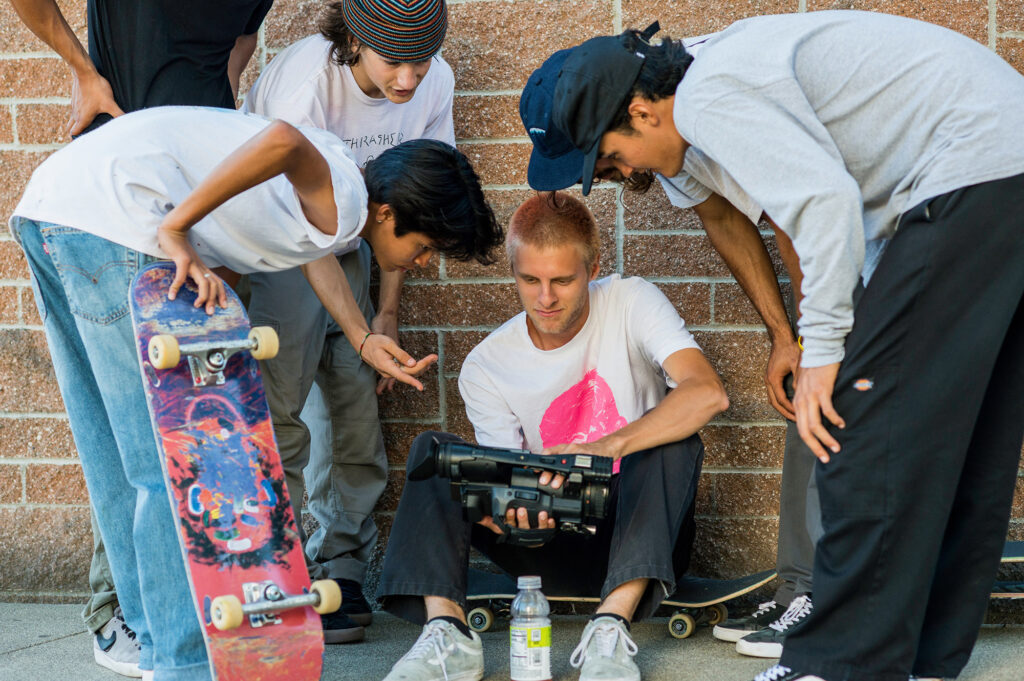
The skate-video thus manifests itself as a realist chronicle of contemporary urban-ness and the characteristics needed to live a full life within it: persistence, adaptation, creativity, community (if one is lucky) and style. It makes sense, then, that now, we are seeing the entry of skateboarding and skateboarders into highbrow cultural spaces: spaces that subsist off of the transformation of everyday urban reality and pain into product and spectacle.
What is most impressive about Skate culture’s relationship to “authenticity,” however, is that the core spirit of authenticity and realness present within it has maintained itself throughout this transition. Taking advantage of this newfound access, it has used it to further strengthen its soul and push towards its original goals. Genesis embodies this generation-defining ethos of upward-movement into new spaces through “authentic” skate-centric work, yet in their local context they are relative pioneers in the sense of their reach. This is what makes the release of Genesis 3 so exciting for the Seattle skate community: they are the incoming vanguard of a level potentially unseen in the city for quite some time.
As the meeting ended, the tension borne from this pressure molded itself into excitement for the future. The crew decided to take a risk and invest their own money into the creation of merch, a symbolic commitment to the brand’s future. While they may not know what the future holds, they know that it’s bright, and seem unfettered by the past. It’s the most important part of their sprawling lore, and maybe, in many ways, why they feel so refreshing.

